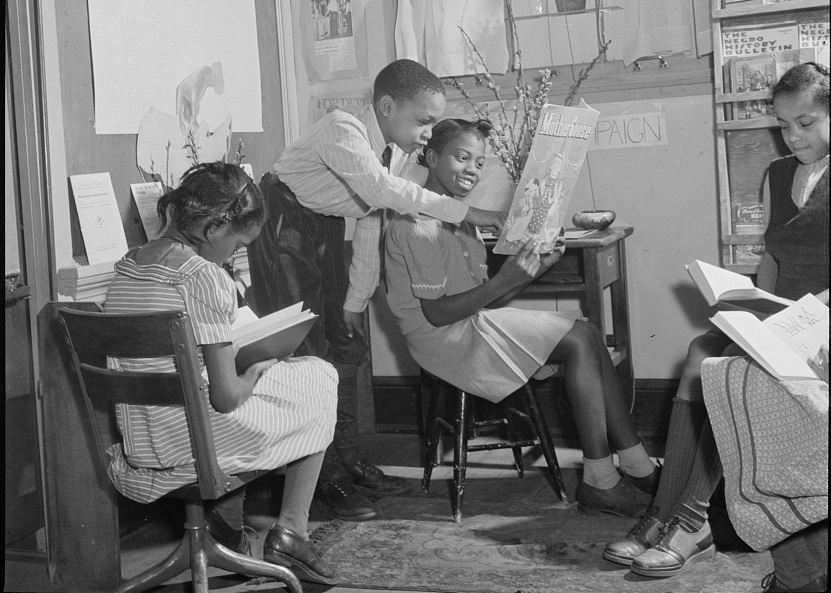Bringing Archives of Death and Life into the Classroom

This fall I am teaching African American History Since 1863, starting with the event of Emancipation as a legal-juridical happening and inviting my students to test the premises of freedom as a fully-enfranchised material and imaginative reality in the lives of Black Americans over time.
When taking account of this long history, we are confronted chiefly by themes of life and death, or rather, we see the historic and social conditions that underwrite Black death can be found operative almost anywhere at anytime, while those that tend to the flourishing of Black life are precarious, contingent, clandestine. This tension recently has grown, aided by a late political climate in which the intractability of White supremacist structures is once again front page news.
How then should we as historians of African America frame the teaching of this history? Which valence — life or death — should we choose to emphasize? Thoughtful reasons for each consideration abound, and both emerge ultimately out of an ethics of care for the plight of Black people.
The archives of Black folk’s time spent in America are bloody, violent, and filled with ghastly horrors and all too real examples of how cruel and wanton people can be to each other, through wilful malice and blithe unawareness alike. White supremacy, as a structuring logic, a social schema, and a cultural way of knowing and doing, has left a trail of destruction and death behind in its wake.
The archives of Black folk’s time spent in America are also delightfully soulful, elegantly rhythmic and lyrical, and filled with the sweetness of charity and grace, as well as tenacity, courage, wit, indomitability and strength. Black cultural production, institution-building, and social mobilizations have served as crucial sites where Black Americans could mobilize collective resources, deploy direct action tactics, and stage rituals of memory and meaningfulness in our fraught and tragic pursuits of happiness. That such beauty and ugliness lie together so intimately in these Black archives is a/the great paradox of American history, and ought to give us pause in answering too quickly the questions that animate the discipline of history’s humanist inquiries into the very nature of human nature.
Formulating the problem of how to teach this history as an “either/or” choice, in order to give a narrative framing to the archive, does not allow for a recovery of the totality of the Black past. In order to move away from a simple binary understanding of Black life and death, choosing instead to think these terms together in a way that allows for students to grasp easily the complexity of the past, I present the notion of polarity as a pedagogical model.
A polarity, unlike a binary, contains two polar opposites that nonetheless rely upon each other to generate energy within an integrated circuit. Batteries are a great example, and most everyone is familiar with the positive and negative poles at each end. Batteries work when a buildup of electrons in the anode (-) flow through a circuitry into the cathode (+) at the other end. If we think of death and life as the anodes and cathodes of our times in the Diaspora, then we begin to see Blackness itself emerge as the name we give to this energized flow, and as anyone who has encountered the spark of Blackness firsthand can tell you, it’s electric (boogie, woogie, woogie!).
What does this look like in practice? One example might be that when teaching the Harlem Renaissance, we do not frame it only as a standout example of Black intellectualism and artistry engaging and co-creating the culture of modernity, but we make sure that our students know that so many diverse Black folk were on the move, showing up in New York City, because they were in the midst of a refugee crisis known as the Great Migration in which nearly a million and a half people fled the Jim Crow South by 1930 alone, escaping the terrorism and state of exception of lynch law.
When we attune to this particular register of the Renaissance — rhapsodizing Black death — we might then string together a list of primary sources that include Claude McKay’s poem “The Lynching” (1922) with George Bellows’s lithograph “The Law is Too Slow” (1923) and Georgia Douglas Johnson’s one-act play Blue-Eyed Black Boy (1930), that all deal with the theme through their specific artistic medium. This attunement also reveals that the stakes in George S. Schuyler’s “The Negro Art Hokum” (1926), Langston Hughes’s “The Negro Artist and the Racial Mountain” (1926), and W. E. B. Du Bois’s “Criteria of Negro Art” (1926) in which he pronounced that “all art is propaganda” were much higher than a trifling debate about aesthetics or generational divides, but rather was animated by the gratuitous and chronic nature of White violence against Black bodies. This critical artistic political engagement crystallized with the formation of the Writers’ League Against Lynching in 1933. If the Harlem Renaissance signifies some rebirthing of Black culture, then let us duly note that this Blackness is the reborn phoenix, constantly rising to life out of its ashy grave (and still I rise).
This semester I will keep a battery in my classroom as a haptic device to pass around from time to time when I need to alert my students to the complexity of life and death’s integrated circuitry, and as a reminder to my students that in order to have a firm grip on the diverse textures of the Black American past, we must confront the terms of our polarizing history.
Copyright © AAIHS. May not be reprinted without permission.
Lovely. Thank you.